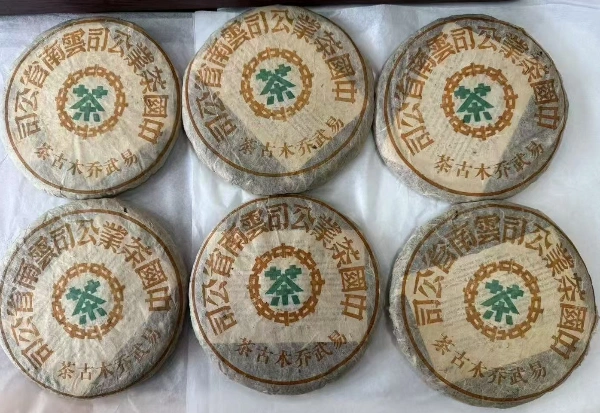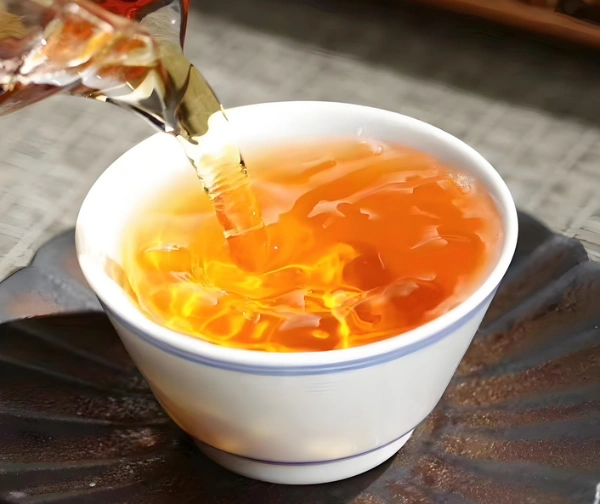Pu erh tea brewing temperature is the secret ingredient that transforms humble tea leaves into a captivating sensory experience. Imagine the steam rising in a golden haze, carrying earthy scents of damp forest and honeyed tobacco, as you cradle a warm cup. Hit the right temperature, and you’ll coax out delicate floral top notes from raw pu erh and rich, cocoa‑like depths from ripe pu erh. Get it wrong, and bitterness or flatness can overshadow your tea’s true character.
In this guide, you’ll master how to brew pu erh tea properly, explore a beginner‑friendly pu erh tea brewing guide, and even learn simple tools and techniques to ensure every infusion sings with vibrant flavor.
1. Why Temperature Matters: Unlocking Flavor & Benefits
Water temperature dictates which compounds dissolve and which remain locked in the leaf:
- Polyphenols & Antioxidants: Release accelerates above 85 °C, peaking around 95 °C before excessive heat degrades fragile flavonoids【1】.
- Theabrownins & Thearubigins: These large, oxidation‑derived molecules require near‑boiling water (95–100 °C) to fully infuse, giving ripe pu erh its signature smoothness.
- Aromatic Oils: Lower temperatures (90–95°C) preserve volatile aromatics in young raw sheng, preventing steam from carrying them away.
Precise pu erh tea brewing temperature ensures you capture both health benefits and nuanced flavors in every cup.

2. Pu Erh Tea Types & Their Ideal Temperatures
| Pu Erh Style | Ideal Temp | Flavor Focus |
|---|---|---|
| Raw (Sheng) | 90–95 °C | Floral, green, honeyed |
| Ripe (Shou) | 95–100 °C | Earthy, cocoa, mellow |
- Raw Sheng: 90 °C–95 °C unlocks delicate orchard fruit and gardenia notes without harsh tannins.
- Ripe Shou: 95 °C–100 °C reveals deep caramel, smoke, and cocoa, ensuring a full‑bodied, velvety sip.
Adjusting temperature by just 5 °C can turn a bitter sip into a satin‑smooth delight.
3. Temperature Ranges: Precision for Beginners
For those new to tea, simple guidelines prevent guesswork:
- Use an electric kettle with temperature control—set to within ±2 °C of your target.
- If using stovetop or microwave, let water boil then rest for 30 s before pouring for 95 °C, or cool for 60 s for 90 °C.
- Thermometers clipped to kettle spouts offer real‑time readings and confidence.
Following these steps, any pu erh tea for beginners can hit the sweet spot.
4. Pu Erh Tea Brewing Guide: Step‑by‑Step Temperature Control
- Preheat Vessel: Rinse your gaiwan or teapot with target‑temperature water to stabilize temperature.
- Measure Tea: Use a digital scale to weigh 5 g of leaves per 100 ml of water.
- Rinse Tea: Pour water at brewing temperature, swirl for 5 s, and discard to awaken leaves.
- First Infusion: Steep 10–15 s, depending on style—shorter for raw, slightly longer for ripe.
- Subsequent Infusions: Increase steep by 5–10 s per brew; water should still be within your ideal temperature range.
- Mindful Sipping: Taste each infusion; note how flavor evolves as temperature and time extract different compounds.
This pu erh tea brewing guide transforms temperature mastery into delicious consistency.

5. How to Brew Pu Erh Tea Properly: Tools & Techniques
Equip yourself with reliable gear:
- Temperature‑Controlled Electric Kettle: Precise to ±1 °C.
- Tea Thermometer: Clip to spout for stovetop kettles.
- Digital Scale: Accurate to 0.1 g for repeatable ratios.
- Gaiwan or Yixing Teapot: Materials that retain heat, ensuring water stays in range.
Combine these tools with attention to pu erh tea brewing temperature, and you’ll be brewing like a pro.
6. Common Temperature Mistakes & Troubleshooting
Even aficionados err. Watch out for:
- Boiling Raw Sheng: Using 100 °C water on raw pu erh can scorch leaves, yielding bitterness.
- Too‑Cool Water on Ripe: Brewing shou below 90 °C can result in weak, flat infusions lacking depth.
- Temperature Fluctuations: Never pour directly from kettle to room‑temperature vessel; pre‑heat to maintain consistency.
Correct these pitfalls to keep every infusion vibrant and balanced.
7. Advanced Tips: Multiple Infusions & Temperature Tweaks
Extend your tasting journey:
- First Two Brews: Use your higher end of the range (90 °C for sheng, 100 °C for shou) to extract core flavors.
- Later Infusions: Gradually reduce temperature by 5 °C per infusion to gently coax out subtler notes without bitterness.
- Temperature Cycling: For a special tasting session, alternate between 90 °C and 95 °C steeps on sheng to explore floral versus honeyed character.
These temperature tweaks let you explore pu erh’s full spectrum across 8–12 steeps.

🔗 To learn more about how to make tea, check out Tanbiwencha’s YouTube video explaining how to make tea.
8. Integrating Temperature into Your Pu Erh Tea Ritual
Make precision part of your habit:
- Set Reminders: Align your kettle’s presets with your favorite tea type.
- Record Sessions: Keep a tea journal noting temperatures, steep times, and tasting notes.
- Share & Compare: Swap logs with friends to discover temperature‑flavor relationships.
Integrating these practices turns how to brew pu erh tea properly into an artful daily ritual.
Conclusion: Perfect Your Pu Erh with Precise Brewing Temperatures
Mastering pu erh tea brewing temperature is your key to unlocking every leaf’s potential—from the brisk florals of raw pu erh to the velvety depths of ripe pu erh. Armed with a pu erh tea brewing guide, the right tools, and a dash of curiosity, you’ll transform each cup into a journey of evolving flavors and wellness benefits. Embrace precision, experiment boldly, and let temperature be your secret to unforgettable pu erh moments.



